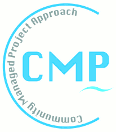National Water Safety Planning Workshop held on March 5 in Addis Ababa
The event was organized by the Ministry of Water, Irrigation and Energy in collaboration with the Finland Government supported COWASH Project. The stakeholders were from Agriculture (1), Civil Society Organizations (4), Donor organizations (10), Ministry of Water, Irrigation and Energy (8), Private sector (2) and from COWASH (4).
WSP stakeholders in Capital Hotel on March 5, 2014 (Photo Arto Suominen)
The workshop started with an introduction to water safety planning by UNICEF which included practical examples from outside Ethiopia. Thereafter the three water safety planning experiences in Ethiopia were presented by the Help for a Drop of Water (HfDW) from Tigray region, by the Welt, Hunger, and Hilfe (WHH) from Oromia Region and by COWASH from Amhara Region. The HfDW WSP intervention concentrated on baseline data collection, WHH focused on multi-village water scheme based WSP intervention and COWASH presented Kebele/micro-watershed based intervention. All presentations can be found http://www.cmpethiopia.org/page/706. Important problems were highlighted which related to a greater or lesser extent to catchment problems, risks in the systems, risks in collection and storage including the use of non-protected sources.
Two groups were formed to discuss respectively 1) the strategic and institutional development needed to scale-up WSP in Ethiopia and 2) the approach and actors needed to implement rural WSP.
The first group concluded that a National WSP strategy and National WSP Implementation Guideline needs to be developed for Ethiopia. They also pointed out that the WSP is not an issue of drinking water alone, but a much broader concept where integrated catchment development and household level hygiene and sanitation issues including household water treatment and safe storage also need to be addressed. The group outlined a process with key responsibilities for the WSP strategy and Implementation Guideline development in Ethiopia.
The rural WSP group confirmed the need for a national strategy and suggested that it would be practical to initiate WSP at the lowest formal government level and start with one micro-watershed in a Kebele and then move on to the others. This however is not a blue print approach as conditions may vary for example in the case of multi-Kebele systems. It was stressed that the actual WSP implementation should use existing WASH structures reinforced and integrated with existing other structures established by the agriculture and health sector, specifically the watershed committees and health extension workers structures respectively. Another point stressed by the group concerned the need for capacity building and experience sharing.

